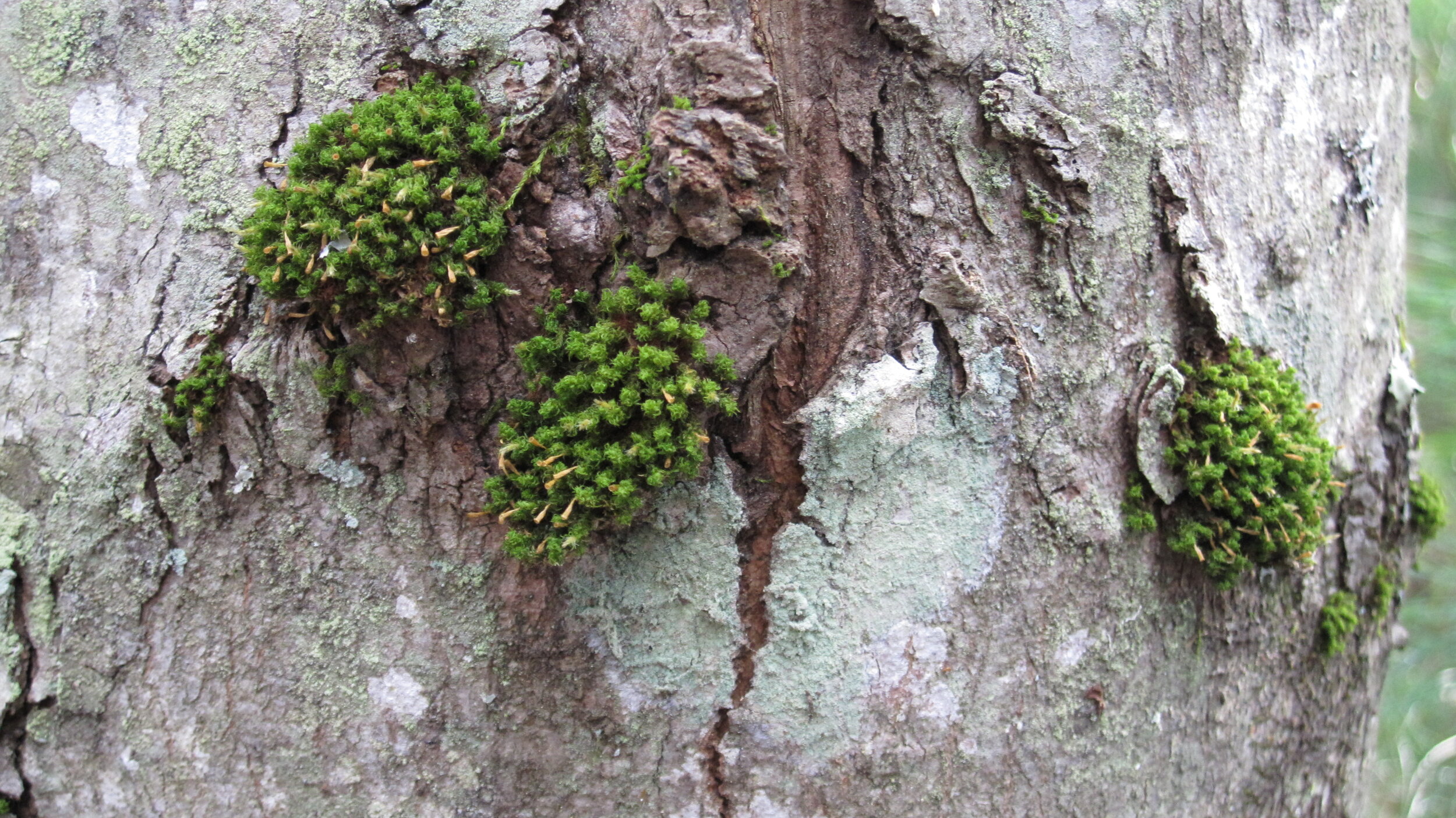Substrate ecology
Bryophytes exist on a wide range of substrates to include trees, soil, rock, and litter, as well as animal carcasses and man-made materials. The occupancy of any given substrate is most likely determined by the properties of the substrate, rather than any specific preference for a given substrate material. In an ecological sense, there are three primary factors that determine if a substrate can be colonized.
1). Life Span:
2). Chemical Properties:
3). Water Holding Capacity:
A few general categories of substrate types are discussed below.
Ulota sp. well up growing on a tree trunk, Rachel Carson National Wildlife Refuge, Maine
Epiphytes are species that grow on the trunks or stems of other plants. Such species utilize the trunks as a substrate without deriving any nutrients from the living tissues of their host (in other words they are not parasitic). These can generally be subdivided into obligate and facultative species (Smith 1982). There is also a general correlation between obligate species and early successional communities, with later successional communities being occupied by more facultative species (Smith 1982; Bates, et al. 1997).
Leafy liverworts growing on a fern frond - El Yunque National Forest, Puerto Rico
Epiphylls, in moist humid environments, colonize the leaves of other plants. These substrates are typically large-leaved evergreen plants of the tropics and subtropics (Pocs 1982). Although some epiphylls can have rhizoids that penetrate the leaf cuticle of their substrate, this does not appear to be a case of direct parasitism since there is no transfer of photosynthate in the process (Eze and Berrie 1977).
Grimmia sp. growing on rocks, Fossil Hill, Montague County, Texas
Epiliths occur on rock of various types (chemistry). Genera such as Grimmia (in the image to the right) are obligate inhabitants on rocks in Texas. Other species such as Racomitrium (below) are rock dwelling species as well. These species have adapted to sites that are less water-retentive, but much more permanent than tree or soil substrates (Bates 2009).
Moss growing on a near vertical surface, Love Creek Preserve, Bandera County, Texas
Litter
Pleurochaete luteola is common on Juniperus litter in the Texas hill country
Fire Mosses
Funaria hygrometrica growing in an abandoned campfire ring, Rocky Creek Preserve
Dung
Calciphiles
Halophytes (salt tolerant species)
Metalophytes (metal rich substrates)






